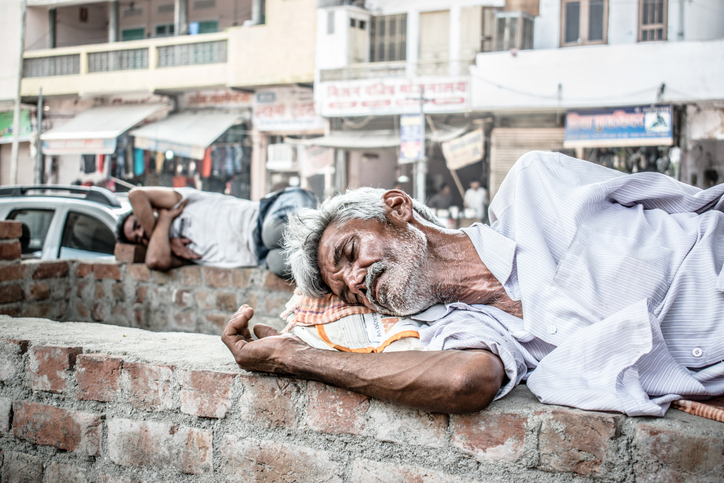Subsidies for utilities such as water and electricity are commonly used in developing countries to reduce poverty and improve the quality of life. But as this column explains, how such measures are implemented can have undesirable consequences for urban development and efforts to reduce inequality. Colombia’s stratification system, introduced 30 years ago, provides a telling case study.
Policy interventions on utility prices aim to improve living conditions by increasing coverage and accessibility at affordable prices for lower-income groups, while simultaneously charging an additional cost to higher-income groups to ensure financial sustainability and long-standing provision. Such schemes are widespread in Africa, South Asia, and Latin America. But while the feasibility of implementation is key to their success, there is no single system for assessing the payment capacities of different populations within a country.
As part of a package of policies intended to reduce inequality, in 1994, Colombia’s central government chose to stratify its population in order to provide utilities through a system of cross-subsidies. The main goal of stratification was to identify different groups’ payment capacities based on the exterior physical characteristics of their houses and the conditions of their immediate surrounding areas. The underlying assumption was that easily observable physical characteristics are enough to capture the relevant socio-economic information for classifying groups.
Colombia’s system not only tries to tackle inequality by securing basic utilities for everyone, but also aims to ensure that the tax system is more progressive. At the time of its implementation, the system was novel and the country was seen as a worthy example of progressive social policy intervention.
Nowadays, however, there is a consensus that the stratification system has limitations and needs to be improved. In a recent report, we identify the lessons from a system that measures households’ payment capacity exclusively from observable physical characteristics.
First, stratification promoted a mismatch between households’ payment capacities and their classification, thereby creating excessive inclusion of taxpayers among the beneficiaries. In other words, there were many more households classified as low-income or vulnerable, making them eligible for receiving a subsidy even though they had the capacity to pay the full rate for utilities.
Second, the incorrect identification of taxpayers as beneficiaries caused cities to reach the maximum allowed percentages to subsidize each stratification category, jeopardizing their local governments’ financial stability. This meant that expenditures surpassed collected resources to fund the system, creating a financial imbalance.
Third, the system has strongly influenced the emergence and persistence of spatial segregation within cities.
We explain why each of these unintended consequences of stratification arose. To do so, we have as a general framework similar challenges faced by countries in the Global South, as well as policy-makers aiming to strengthen policy interventions for reaching socially desirable goals such as reduced inequality, lower spatial segregation, and long-term sustainability.
Stratification has promoted a big mismatch between households’ payment capacities and their classification
Colombia’s system is unable to classify households’ payment capacities accurately over time, which harms its financial stability. Improvements in economic growth and poverty reduction are not reflected in the stratification. Fundamentally, this is because many homeowners have decided to keep the external characteristics of their houses unchanged even though their payment capacity has improved over time with rising incomes.
This means that stratification does not capture upward income mobility happening mostly for lower-income groups. It was not designed to adapt to a changing economic environment, which is reflected in the high percentage of wrongly identified beneficiaries. This outcome applies not only in times of positive growth but also when growth is negative, as in the pandemic era when limited government resources must be dedicated to the most needy.
Stratification threatens local governments’ long-term financial stability
Stratification has different maximum percentages for subsidizing beneficiaries and additional charges for contributors. Once these maximum percentages are reached, any imbalance has to be covered by the local government. A long-lasting deficit jeopardizes local governments’ financial stability, which is the most likely scenario in a context of persistent mismatch between households’ payment capacity and their classification.
Stratification has strongly influenced the emergence and persistence of spatial segregation within cities
While all cities go through a development process in which people cluster based on socio-economic characteristics, Colombia’s system distorts incentives for housing location decisions. For example, people opt to live in lower stratified households to benefit from the higher subsidies, rendering entire neighborhoods clustered and segregated.
Since larger cities typically experience faster growth and socio-economic improvement than smaller cities, significant misidentification of beneficiaries is more likely to occur in them. Linked to this, while larger cities have better knowledge endowments and institutional capacity, they are still unable to match the speed of adaptability to the rate of their economic development to correct the mismatch. At the same time, smaller cities experience even greater challenges due to their different governmental and organizational scales.
In addition, the system’s use has surpassed the scope for which it was designed. The credibility of stratification has led local governments to use the system to target social spending in other areas, such as housing, education, and health, even though categories do not accurately reflect different groups’ payment capacities. This magnifies the identification mismatch and is likely to be widening inequality.
Rethinking stratification
Colombia is currently focused on designing a new scheme with more accurate identification of different groups. Compared with current stratification, the proposed scheme will use more dimensions to identify beneficiaries. It will aim to put the characteristics of individuals and households at the center of the classification instead of the external features of their houses; it will take advantage of the large administrative records of the census for low-income households; and it will introduce new technological capacities related to big data to process constantly growing databases.
Nonetheless, for national policies like stratification, cities have limited capacity to modify the law that regulates it. The interplay between political and technical perspectives, as well as the tension between central government and local municipalities, call for a greater discussion to consider any redistribution system that is more adaptable to local needs, rather than a universal technical instrument to address inequities exclusively through subsidies.
Discussion of policies on utilities provision fits into the larger debate on strategies designed to tackle inequality in developing countries. While lower inequality is a key goal of sustainable growth, it is easily affected by negative shocks like the pandemic and can become an even more challenging task. In a post-pandemic world, where inequalities have been shown to be life or death on a global scale, enacting policies that better address these gaps should be a top priority everywhere.







